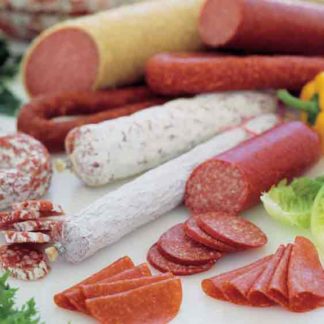Bactoferm
The success of Chr. Hansen’s meat starter cultures is based on the demand for uniform food products and a high level of food safety. Our cultures will eliminate the influence of the uncontrollable native flora and provide the requested food quality – from batch to batch.
The process of fermenting and drying sausages is believed to be one of the oldest techniques for preserving meat. Production started in the Mediterranean countries and was well known in the Roman Empire. Since then the concept was spread all over Europe and later on to other parts of the world.
Sausage fermentation has always been based on the presence of lactic acid bacteria and Micrococcaceae species in the meat and in the environment of the sausage factory. Before starter cultures were available the fermentation relied on the indigenous bacterial flora that was favored by pre-salting, by the mincing and stuffing procedure and by the climatic conditions during maturation. The method was not always successful, though. Sometimes it resulted in an unfermented sausage with too high pH, growth of spoilage bacteria and, in the worst-case, growth of pathogenic bacteria. Also growth of undesirable lactic acid bacteria was sometimes detected, for example lactic acid bacteria with the ability of producing gas (hetero-fermentative strains).
Today a great variety of cultures from several manufacturers are available, in most cases including the microorganisms that predominate in the traditional fermented products. Thus, a uniform fermentation with the right homo-fermentative lactic acid bacteria is secured, and the flavor development, color formation and color stability are improved by adding an additional flora of species from the Micrococcaceae family; primarily staphylococci, but also other species. Additionally, prevention of mycotoxin formation in mold-fermented sausages is ensured by application of
well-defined Penicillium cultures.
Showing the single result
Showing the single result
